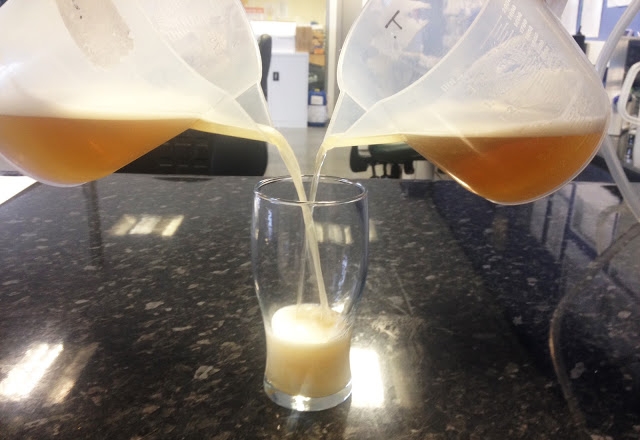The theory is that doing a single malt, single hop beer you can really get to know a particular hop and come to grips with its character without ‘muddying the waters’ with other malts and hops. With this in mind we caught up with JK who shared some of his experience and tips for brewing, blending and other SMASH beer experiments below.
Brewing SMASH beers can be a great learning experience, it’s the first thing I do when I get hold of a new hop to try out. I like to brew to the malt and hop bill shown below using a standard mash/boil schedule for a pale ale. This combined with a clean fermenting yeast such as Mangrove Jack’s M44 US West Coast ale yeast allows the hop character to really shine through.
MALT & HOP BILL 23 L
6 kg of Maris Otter
1.061 OG
150 g hops end of the boil
150 g hops to dry hop
I’ve done this with multiple different varieties of hops to date, and find for a simple but flavourful standalone beer the ones that have worked best have been:
- Amarillo
- Citra
- Mosaic
- Simcoe
- Nelson Sauvin
- Motueka
- Centennial
- Chinook
- Summit
- Galaxy
- Equinox
- Cascade
 |
| End of boil and dry hop additions weighed out |
Remember, not all hops are created equal, some hops, dependent on their inherent characteristics are more or less appropriate for single hop experimentation. A lot of hops aren’t naturally expressive but will help to create an excellent hop profile, a good example of this is Waimea, I had thought that it could be a great single hop beer option but upon opening the bag and smelling the hop I knew that it wouldn’t work on its own and that it needed some friends to shine.
BLENDING
Now whilst the above is great for improving your understanding of individual hops, I always find that after a couple of bottles I’ve gotten everything I need to know. So what do I do with the rest of the batch? I blend them, post fermentation, with other single hop beers to assess possible interactions between hops.
This is a great idea if you’re in a homebrew club where each member can brew a different SMASH beer and share them with others during your next meet. Using the 12 hops above as an example, if you were to blend them 50/50 with one another that gives 132 beer combinations, but why stop there you can blend 3, 4 or 5 of the above, and all in different proportions…….the possibilities are endless. Top tip for when you’re doing this, remember a pen and notepad when you start tasting and make notes on each combination and the proportions you’ve blended, what works and what doesn’t – this will help you massively when designing recipes in the future.
OTHER EXPERIMENTS
If that doesn’t satisfy your thirst for hop knowledge here’s two more SMASH beer experiments you can do:
- Compare hop terroir from different locations – Cascade is a great hop, and it’s available from five different places in the world (USA, UK, two places in Germany and New Zealand). Each will have different characteristics specific to where it has been grown. Brew them out and taste side by side to see which is best suited to your beer.
- Compare hops from different crop years – Is this year’s or last year’s crop more flavourful, aromatic? How do they differ and which one’s going to give you what you want in your beer?

